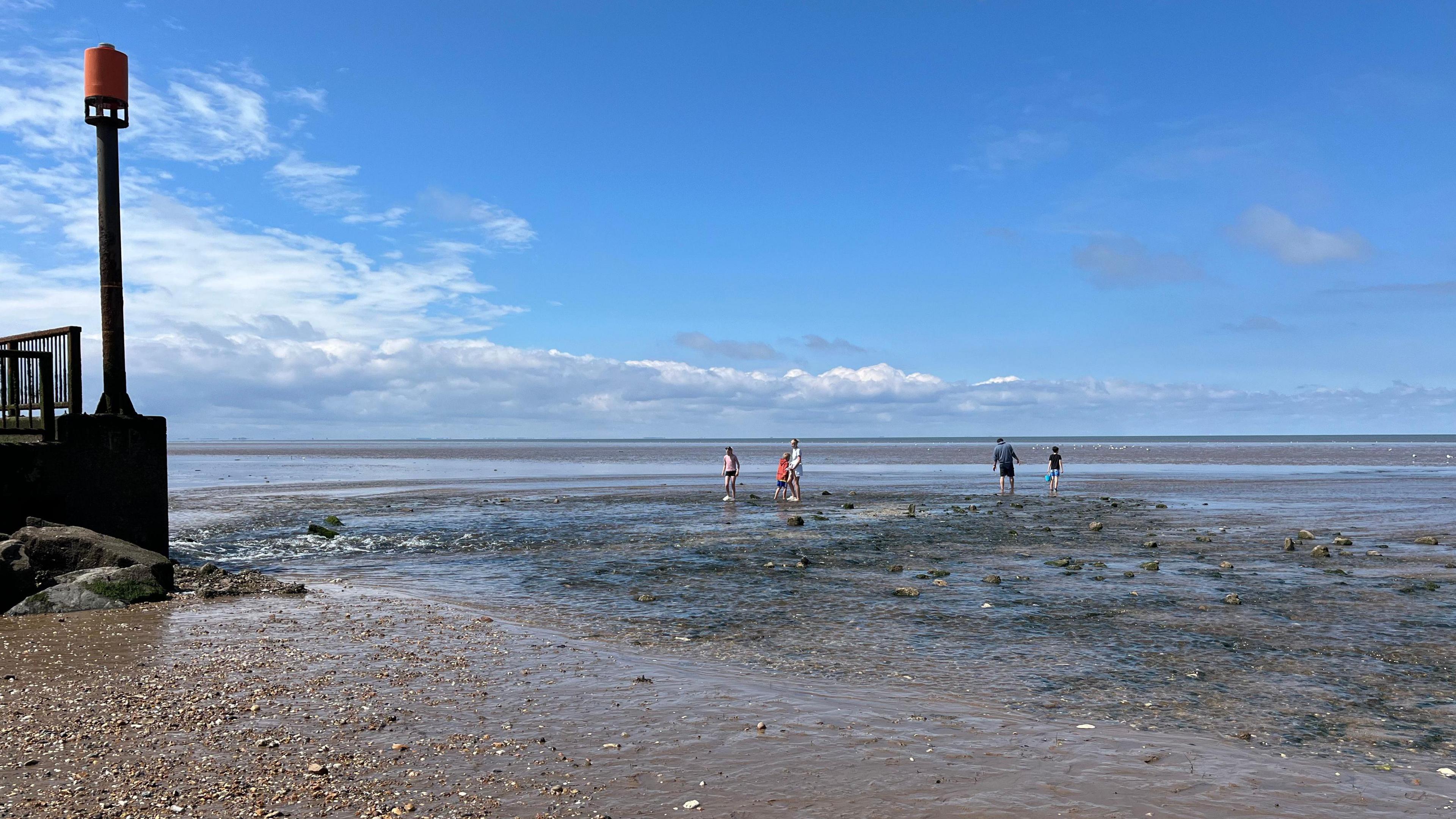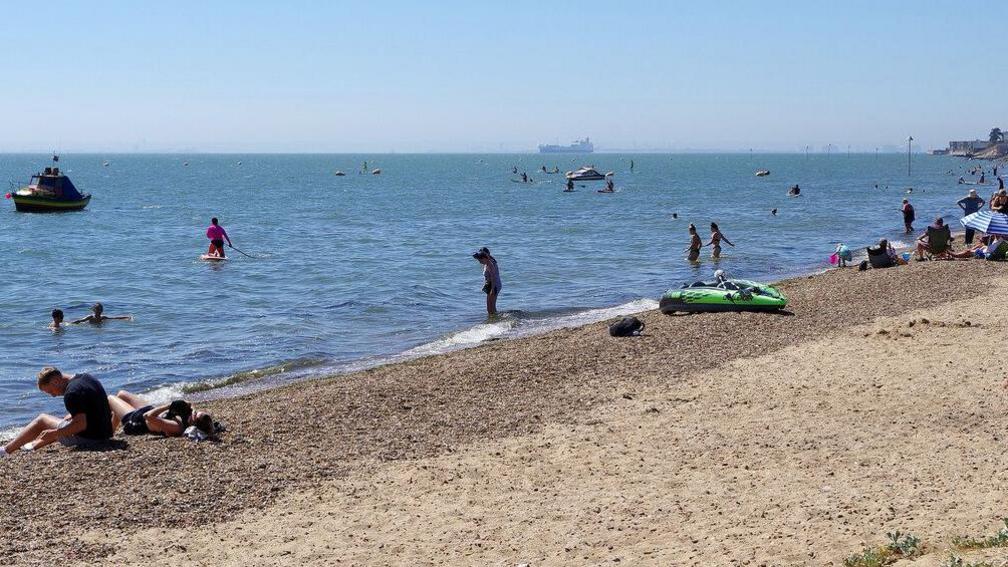Water quality improves at beach hit by pollution

The water quality at Heacham had been poor for a number of years
- Published
Bathing water quality at a beach affected by pollution has been classed as sufficient, in the latest set of Environment Agency (EA) results.
The water at Heacham, near Hunstanton in Norfolk, has been deemed poor since 2021, but has now improved its rating.
Wells-next-the-Sea and Caister-on-Sea, also in Norfolk, and Holland-on-Sea and Jaywick in Essex, have now been graded as excellent instead of good, with Hunstanton Main and Old beaches and Manningtree, in Essex, rising from sufficient to good.
"This season has brought encouraging news for local bathing water quality," said Andrew Raine, EA's water manager in East Anglia.
He added that the agency was "pleased" by Heacham's improvement and noted the four other sites across the region that had moved to excellent.

Jaywick, near Clacton-on-Sea in Essex, has been now been classified as having excellent waters to bathe in
"However, we recognise there is still a need to improve water quality - Shoeburyness has deteriorated from excellent to good this season," Mr Raine said.
"We continue to work with a range of organisations to further improve water quality and will take action where we need to prevent the pollution of our streams, rivers and seas."

Lowestoft's beaches - both north and south of the pier in the Suffolk town - have been classified as good
Thirty-two sites across the country were classified as poor in the 2025 figures, external, an improvement on the 37 spots that failed to meet the minimum standard for advisable bathing last year.
The EA said more than 97% of East Anglia's bathing spots met sufficient or higher standards for levels of bacteria in the water linked to sewage spills, agricultural pollution and other factors.

Shoeburyness in Essex has had its water quality downgraded to good
The agency measures pollution levels between May and September which could affect people's health.
In particular, it looks for E. coli and intestinal enterococci (IE) bacteria, which can cause severe stomach upsets.
The cause of the issues at Heacham has been disputed between experts and locals, but the council has said its coastal waters may have always had high pollution levels.
Studies suggested 60% of IE bacteria recorded in human and animal waste may be coming from seabirds, which flock to The Wash in huge numbers.
Sewage leaks/outfalls, agricultural run-off and dog waste have all been cited as contributing factors.
Water reforms
The government has said new bathing water reforms - which came into force last week - will better reflect how people use bathing spots across England.
The changes will include getting rid of fixed seasons, so there will be more flexibility around times water is tested.
The definition of bather will also be expanded to water sports enthusiasts such as surfers, paddleboarders and kayakers.
The new rules will also mean that bathing spots will not have statuses automatically removed after five years' of poor ratings in a row and the issues will be looked at instead.
Get in touch
Do you have a story suggestion for the East of England?
Follow East of England news on X, external, Instagram, external and Facebook: BBC Beds, Herts & Bucks, external, BBC Cambridgeshire, external, BBC Essex, external, BBC Norfolk, external, BBC Northamptonshire, external or BBC Suffolk, external.
Related topics
- Published3 hours ago

- Published1 July

- Published29 May
